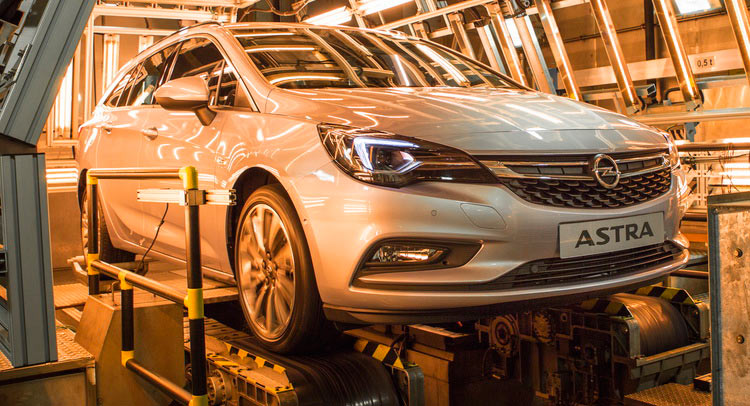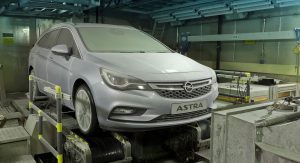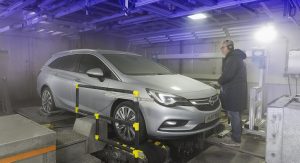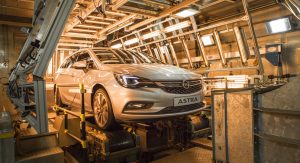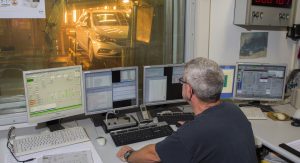In order to get their all-new Astra Sports Tourer ready for the harshest environments in Europe, Opel put it through a series of tests inside of their International Technical Development Center.
The ITDC can reproduce conditions comparable to the Sahara desert, where temperatures can hit 60 degrees Celsius.
In this environment, the new Astra is able to hang tough while bouncing up and down on the heat test bench as the ventilation system fills the 60 square meter room.
Once the car manages to defeat the heat, it’s on to the cold, which is a completely different scenario taking place at the same location.
For cold tests, the Astra Sports Tourer is wrapped up in a white outfit before being covered with a thin layer of ice. Temperatures are then dropped to -40 degrees Celcius. Very unlikely that the Astra will ever encounter this climate, but nevertheless it did just fine.
“We want to see how the materials in the Sports Tourer react to extreme conditions. We also check if its appearance changes and if extreme heat or cold have an effect on, for example, gap width”, said lead engineer Otto Hemmelmann. “Sealing, bonding, plastic parts and materials, rubber – all this has to work properly, meaning constant elastic constricting and stretching like a rubber band, without bearing any traces of it.”
Both the heat and the cold tests are part of the compulsory program in Opel vehicle development, just like the acoustic and electronic lab tests the German manufacturer that were displayed last year.
The climatic chamber can even simulate direct sunlight with the help of special radiators. “If the Sports Tourer is parked outside in the summer, interior temperatures can reach 90 degrees,” says Hemmelmann, before adding that they also test “how long the air conditioner has to be on until the temperature is bearable again.”



